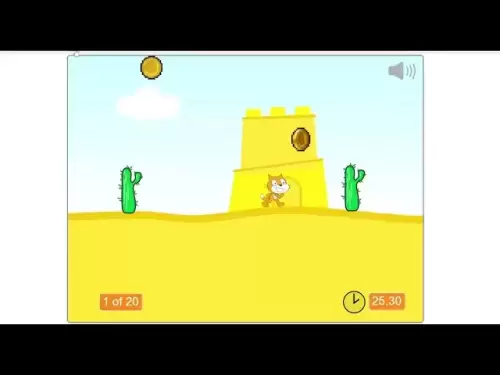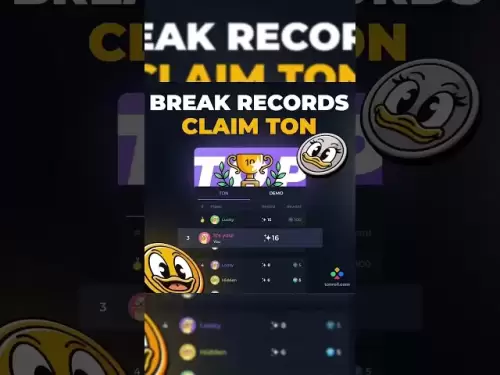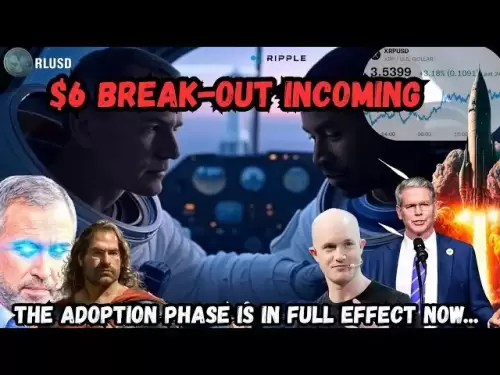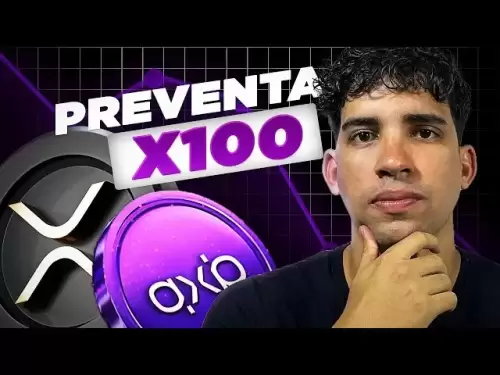-
 Bitcoin
Bitcoin $118100
0.44% -
 Ethereum
Ethereum $3765
5.84% -
 XRP
XRP $3.498
3.12% -
 Tether USDt
Tether USDt $1.000
0.00% -
 BNB
BNB $753.2
3.41% -
 Solana
Solana $181.7
3.58% -
 USDC
USDC $0.9999
0.01% -
 Dogecoin
Dogecoin $0.2704
12.75% -
 Cardano
Cardano $0.8684
5.85% -
 TRON
TRON $0.3151
-0.86% -
 Hyperliquid
Hyperliquid $46.06
4.51% -
 Stellar
Stellar $0.4695
2.48% -
 Sui
Sui $3.910
3.18% -
 Chainlink
Chainlink $19.36
6.65% -
 Hedera
Hedera $0.2750
3.99% -
 Bitcoin Cash
Bitcoin Cash $544.6
6.31% -
 Avalanche
Avalanche $25.12
3.69% -
 Shiba Inu
Shiba Inu $0.00001559
5.40% -
 Litecoin
Litecoin $116.8
5.10% -
 UNUS SED LEO
UNUS SED LEO $8.991
0.05% -
 Toncoin
Toncoin $3.283
2.79% -
 Polkadot
Polkadot $4.509
3.97% -
 Uniswap
Uniswap $10.67
6.58% -
 Ethena USDe
Ethena USDe $1.001
-0.01% -
 Monero
Monero $323.2
0.48% -
 Pepe
Pepe $0.00001410
6.37% -
 Bitget Token
Bitget Token $4.964
1.93% -
 Dai
Dai $0.9998
-0.01% -
 Aave
Aave $326.2
3.85% -
 Bittensor
Bittensor $421.8
2.46%
How to create an NFT collection with different traits?
Create unique NFTs by combining rare traits programmatically, ensuring each digital asset stands out in your collection.
Jul 20, 2025 at 07:15 am
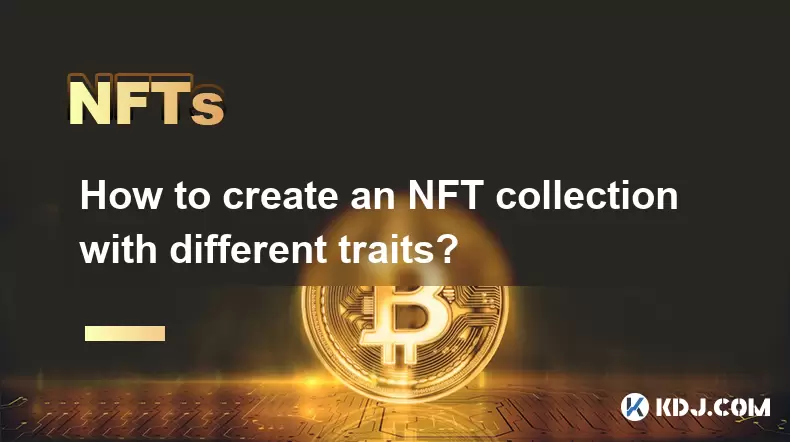
Understanding NFTs and Traits
Non-Fungible Tokens (NFTs) are unique digital assets stored on a blockchain, often used to represent ownership of digital art, collectibles, or other forms of media. Traits, in the context of NFT collections, refer to the individual characteristics that differentiate one NFT from another within the same collection. These traits can include visual elements like background colors, clothing styles, accessories, or even animations.
When creating an NFT collection with different traits, it's important to understand how these traits contribute to the overall rarity and desirability of each NFT. For example, a rare trait might only appear in 1% of the total collection, making those specific NFTs more valuable. Designing your collection around a structured set of traits allows for variety while maintaining a cohesive theme.
Planning Your NFT Collection Structure
Before diving into design or coding, you must plan out your NFT collection structure carefully. This involves defining:
- The total number of NFTs in the collection.
- The categories of traits (e.g., headwear, eyes, mouth, background).
- How many variations will exist per category.
- The rarity distribution across all traits.
This planning stage is crucial because it determines how your final images will be generated programmatically. You’ll need to create layers for each trait type using graphic design tools like Photoshop, Illustrator, or free tools like GIMP and Krita. Each layer should correspond to a trait category and have transparent backgrounds so they can be stacked together later.
Designing and Organizing Trait Layers
Once your categories and rarities are defined, begin designing each individual trait as separate image files. Make sure:
- All images are the same size and resolution.
- Transparent areas align correctly when layered.
- File names reflect their trait category and variation (e.g.,
eyes_blue.png,eyes_red.png).
Organize your trait folders accordingly. A typical folder structure might look like this:
layers/background/eyes/mouth/headwear/
Each subfolder contains PNG files representing the different versions of that particular trait. Maintaining consistent naming conventions and folder structures will streamline the automation process later.
Automating Image Generation with Code
To efficiently generate thousands of unique NFTs, use scripting languages such as Python along with libraries like PIL (Pillow) or Node.js with Canvas. Here’s a simplified workflow:
- Write a script that loops through each NFT index.
- Randomly select one file from each trait category based on predefined rarity weights.
- Load and composite the selected images into a single image.
- Save the final image with a unique name and metadata file (usually JSON format).
Here’s an example snippet using Python:
from PIL import Image
import os
import randomDefine paths
trait_folders = {
"background": "layers/background/",
"eyes": "layers/eyes/",
"mouth": "layers/mouth/",
"headwear": "layers/headwear/"
}
Generate a single NFT
def generate_nft(index):
base = Image.new('RGBA', (500, 500), (255, 255, 255, 0))
for trait_type, path in trait_folders.items():
files = os.listdir(path)
chosen_file = random.choice(files)
img = Image.open(os.path.join(path, chosen_file))
base.paste(img, (0, 0), img)
base.save(f"output/nft_{index}.png")
Repeat this function inside a loop to generate your full collection.
Creating Metadata for Each NFT
Each NFT needs associated metadata that describes its traits and properties. This metadata is typically stored in a JSON file and uploaded alongside the image to platforms like OpenSea or Rarible.
A sample metadata structure looks like this:
{
"name": "My NFT #001",
"description": "A unique NFT with randomized traits.",
"image": "ipfs://Qm...nft_001.png",
"attributes": [
{"trait_type": "Background", "value": "Blue"},
{"trait_type": "Eyes", "value": "Red"},
{"trait_type": "Mouth", "value": "Smile"},
{"trait_type": "Headwear", "value": "Cap"}
]
}
During generation, store these attributes dynamically by extracting trait information from filenames or pre-defined mappings.
Uploading and Minting Your Collection
After generating all images and metadata files, upload them to a decentralized storage platform like IPFS or Filecoin. Tools like Pinata or NFT.Storage make this process easy.
Once uploaded, connect your wallet (like MetaMask) to an NFT marketplace such as OpenSea, LooksRare, or X2Y2. Create a new collection and upload your metadata files. Then, proceed to mint your NFTs either individually or in batches using smart contracts.
If minting on-chain directly, consider deploying an ERC-721 contract via platforms like Remix IDE or Hardhat. Ensure gas costs are minimized and verify contract functionality before deployment.
Frequently Asked Questions
What tools are best for designing NFT trait layers?
Graphic design software such as Adobe Photoshop, Illustrator, or free alternatives like GIMP and Inkscape are commonly used for creating high-quality NFT trait layers. Ensure transparency support and consistency in dimensions across all layers.
How do I ensure uniqueness among generated NFTs?
Use a combination of weighted randomness and hashing algorithms to prevent duplicates. Store previously generated combinations in a database or list to avoid repetition during batch creation.
Can I modify traits after minting NFTs?
Once NFTs are minted and recorded on the blockchain, their metadata becomes immutable unless you've implemented upgradable metadata standards like EIP-4906. Always finalize designs and metadata before minting.
Is it necessary to use code for generating NFT collections?
While manual creation is possible for small collections, using code significantly streamlines the process for large-scale projects. Automation ensures consistency, scalability, and efficient management of trait combinations.
Disclaimer:info@kdj.com
The information provided is not trading advice. kdj.com does not assume any responsibility for any investments made based on the information provided in this article. Cryptocurrencies are highly volatile and it is highly recommended that you invest with caution after thorough research!
If you believe that the content used on this website infringes your copyright, please contact us immediately (info@kdj.com) and we will delete it promptly.
- Cardano (ADA) Price Surges Amid Bitcoin ATH Buzz: What's Next?
- 2025-07-21 12:30:11
- Bitcoin, UK, and Sale: Decoding the Crypto Buzz in Britain
- 2025-07-21 12:30:11
- Ethereum NFT Torch: Celebrating 10 Years of Innovation
- 2025-07-21 12:50:12
- Bitcoin, Ethereum, Crypto Rebound: Is the Bull Back in Town?
- 2025-07-21 12:50:12
- Binance, Seed Tag, and Tokens: What's the Buzz?
- 2025-07-21 12:55:12
- Coinbase, Crypto, and Legislation: A New Financial Era?
- 2025-07-21 13:10:11
Related knowledge
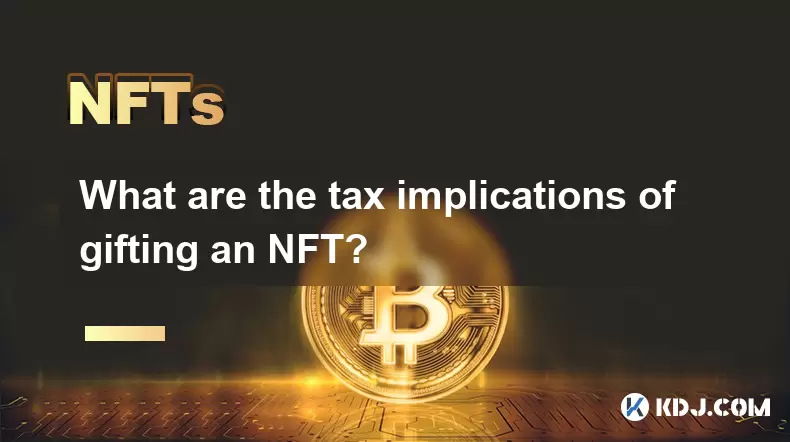
What are the tax implications of gifting an NFT?
Jul 19,2025 at 04:21am
Understanding the Basics of NFT GiftingGifting a Non-Fungible Token (NFT) involves transferring ownership from one individual to another without recei...
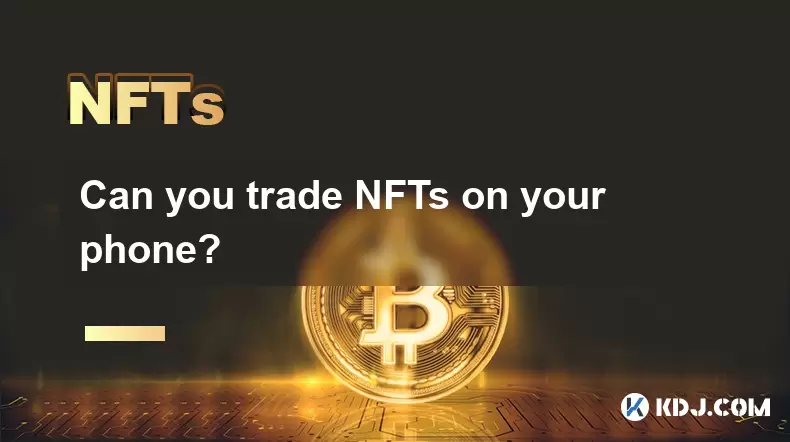
Can you trade NFTs on your phone?
Jul 18,2025 at 04:29am
Trading NFTs on Mobile DevicesYes, you can trade NFTs on your phone, and the process has become increasingly streamlined thanks to a variety of mobile...
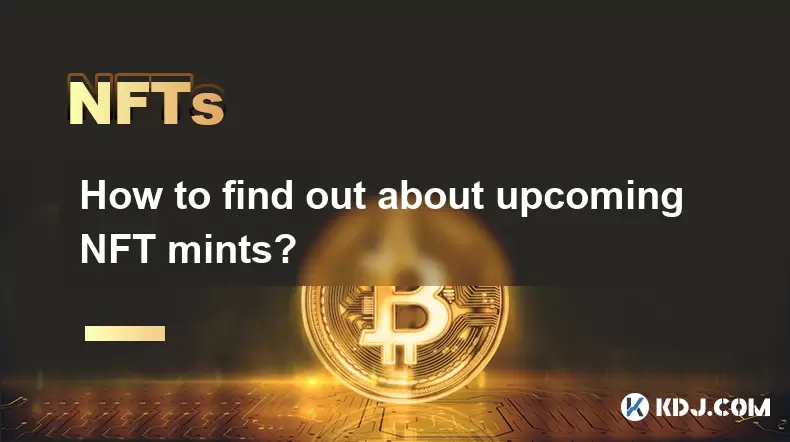
How to find out about upcoming NFT mints?
Jul 18,2025 at 11:50am
Exploring NFT Minting OpportunitiesUnderstanding the landscape of upcoming NFT mints is crucial for collectors, investors, and creators who wish to st...
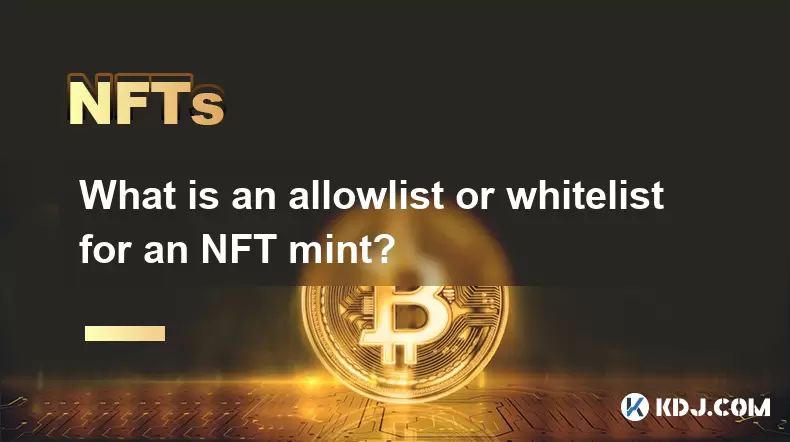
What is an allowlist or whitelist for an NFT mint?
Jul 20,2025 at 07:14pm
Understanding the Concept of an Allowlist for NFT MintingAn allowlist, also commonly referred to as a whitelist, is a mechanism used in the NFT mintin...
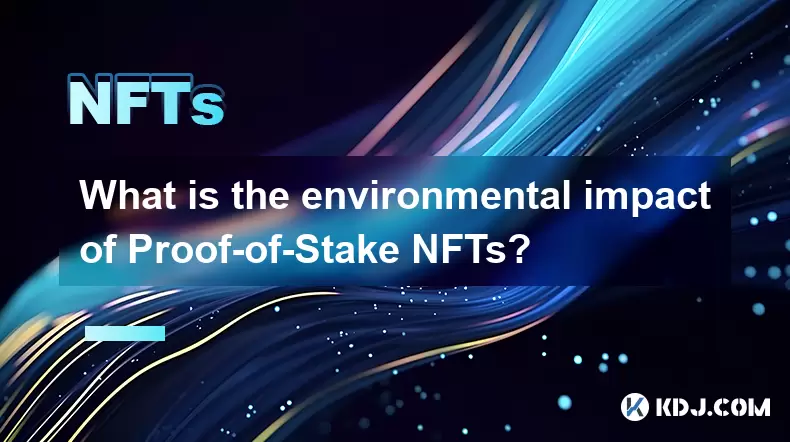
What is the environmental impact of Proof-of-Stake NFTs?
Jul 17,2025 at 07:14pm
Understanding the Basics of Proof-of-Stake NFTsProof-of-Stake (PoS) is a consensus mechanism used by blockchain networks to validate transactions and ...
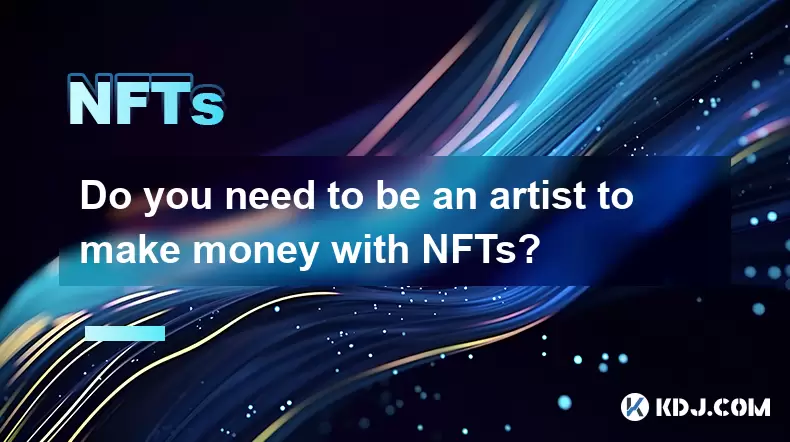
Do you need to be an artist to make money with NFTs?
Jul 19,2025 at 06:35am
Understanding the Role of Art in NFTsThe non-fungible token (NFT) market has grown rapidly, offering various opportunities for creators and investors....

What are the tax implications of gifting an NFT?
Jul 19,2025 at 04:21am
Understanding the Basics of NFT GiftingGifting a Non-Fungible Token (NFT) involves transferring ownership from one individual to another without recei...

Can you trade NFTs on your phone?
Jul 18,2025 at 04:29am
Trading NFTs on Mobile DevicesYes, you can trade NFTs on your phone, and the process has become increasingly streamlined thanks to a variety of mobile...

How to find out about upcoming NFT mints?
Jul 18,2025 at 11:50am
Exploring NFT Minting OpportunitiesUnderstanding the landscape of upcoming NFT mints is crucial for collectors, investors, and creators who wish to st...

What is an allowlist or whitelist for an NFT mint?
Jul 20,2025 at 07:14pm
Understanding the Concept of an Allowlist for NFT MintingAn allowlist, also commonly referred to as a whitelist, is a mechanism used in the NFT mintin...

What is the environmental impact of Proof-of-Stake NFTs?
Jul 17,2025 at 07:14pm
Understanding the Basics of Proof-of-Stake NFTsProof-of-Stake (PoS) is a consensus mechanism used by blockchain networks to validate transactions and ...

Do you need to be an artist to make money with NFTs?
Jul 19,2025 at 06:35am
Understanding the Role of Art in NFTsThe non-fungible token (NFT) market has grown rapidly, offering various opportunities for creators and investors....
See all articles





















